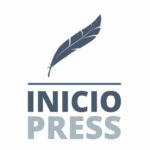The idea of getting published by one of the Big Five publishers is very appealing to many authors. In the following article, we will look at the process of getting a traditional publisher to publish your book. This process typically involves several steps. Here’s a breakdown:
1. Write a Book Proposal (for non-fiction) or Complete Manuscript (for fiction):
- Non-fiction: Most publishers will want to see a proposal, which includes an outline of your book, sample chapters, market analysis, target audience, and why you’re the best person to write it.
- Fiction: Generally, you need to complete the entire manuscript.
2. Find a Literary Agent:
- Many traditional publishers do not accept unsolicited manuscripts, so having an agent is essential. Agents act as intermediaries between authors and publishers, helping to polish your pitch, submit to the right publishers, and negotiate the contract.
- Query Letter: Submit a query letter to agents summarizing your book, why it’s unique, and a bit about yourself.
3. Submit to Publishers:
- If an agent accepts you as a client, they will submit your manuscript or proposal to publishers. They’ll know which publishers are most likely to be interested in your book based on their relationships and the market.
4. Offer and Contract:
- If a publisher is interested, they’ll offer you a contract, which the agent will negotiate to secure an advance and royalties.
5. Editing and Production:
- Once a contract is signed, the book goes through rounds of editing, cover design, and production. The publisher typically handles all of this.
6. Marketing and Distribution:
- The publisher will have a marketing plan for the book, which can include bookstore placements, PR, and more, although authors are often expected to help with promotion.
Pros and Cons of Publishing with Inicio vs. Traditional Publishing
Inicio Press
Pros:
- Creative Control: You have complete control over the content, cover design, title, and marketing strategy.
- Higher Royalties: Self-publishing platforms, such as Amazon’s KDP, often offer higher royalty rates (up to 70% for e-books).
- Faster Timeline: You can publish a book as soon as it’s ready, bypassing the long submission and publication processes of traditional publishers.
- Ownership of Rights: You retain all rights to your book and can decide how it’s used and distributed.
Cons:
- Upfront Costs: You’ll need to cover the costs of editing, cover design, formatting, and marketing.
- Limited Distribution: It can be harder to get self-published books into physical bookstores or other traditional retail outlets.
- Marketing Responsibility: All marketing is your responsibility unless you hire someone to help, and building a readership can be challenging.
- Perception: Despite gains in legitimacy, some still view publishing with a smaller publisher as less prestigious than traditional publishing.
Traditional Publishing
Pros:
- Industry Expertise: You’ll benefit from the publisher’s professional editing, cover design, marketing, and distribution teams.
- Wider Distribution: Traditional publishers can get your book into physical bookstores, libraries, and potentially international markets.
- Advance Payment: You may receive an advance payment before your book is published, even if royalties don’t exceed it.
- Validation: Being picked up by a traditional publisher can add credibility and help open doors for media attention, awards, and endorsements.
Cons:
- Less Creative Control: Publishers often have final say over key decisions, such as the cover design, title, and even some content edits.
- Lower Royalties: You’ll typically earn 10–15% in royalties (compared to higher rates in self-publishing), and these are paid only after the advance is earned back.
- Long Timeline: It can take years from submission to publication.
- Harder to Get In: Finding an agent and landing a publishing deal can be highly competitive and time-consuming.
The traditional publishing market is dominated by several large multinational companies, often referred to as the “Big Five” publishers, along with a few other major players and smaller independent presses. Here’s an overview:
The Big Five Publishers
These five companies control a significant portion of the traditional book publishing industry worldwide.
1. Penguin Random House
- Overview: The largest trade book publisher in the world, formed by the merger of Penguin Group and Random House in 2013. It is a subsidiary of the German media conglomerate Bertelsmann.
- Imprints: Penguin, Viking, Knopf, Crown, Doubleday, Bantam, Del Rey, Riverhead, and more.
- Focus: Fiction, non-fiction, children’s books, and a wide range of genres.
- Notable Authors: George Orwell, Margaret Atwood, Dan Brown, John Grisham.
2. HarperCollins
- Overview: The second-largest publisher globally, owned by News Corp. HarperCollins was formed from the merger of Harper & Row and Collins.
- Imprints: William Morrow, Avon, HarperVoyager, Amistad, and more.
- Focus: Wide variety of fiction and non-fiction, including romance, thrillers, biographies, and children’s literature.
- Notable Authors: J.R.R. Tolkien, Neil Gaiman, Agatha Christie, Harper Lee.
3. Hachette Book Group
- Overview: Owned by the French company Hachette Livre, part of the Lagardère Group. Hachette Book Group includes several well-known imprints and is a major player in the U.S. and international markets.
- Imprints: Little, Brown and Company, Grand Central, Orbit, Mulholland Books.
- Focus: Fiction, non-fiction, children’s, and young adult literature.
- Notable Authors: J.K. Rowling (via Little, Brown), Malcolm Gladwell, James Patterson, Nicholas Sparks.
4. Macmillan Publishers
- Overview: Macmillan is part of Holtzbrinck Publishing Group, a German company. It has numerous imprints that publish across multiple genres.
- Imprints: Farrar, Straus and Giroux, Tor Books, St. Martin’s Press, Picador.
- Focus: Academic, literary fiction, fantasy, science fiction, and non-fiction.
- Notable Authors: Jonathan Franzen, Susan Sontag, Orson Scott Card, Naomi Klein.
5. Simon & Schuster
- Overview: Previously owned by CBS Corporation, Simon & Schuster was recently acquired by KKR, a global investment firm. It is known for both its commercial and literary titles.
- Imprints: Scribner, Atria, Gallery Books, Pocket Books.
- Focus: Fiction, non-fiction, children’s, and educational publishing.
- Notable Authors: Stephen King, Ernest Hemingway (posthumous), Bob Woodward, Walter Isaacson.

